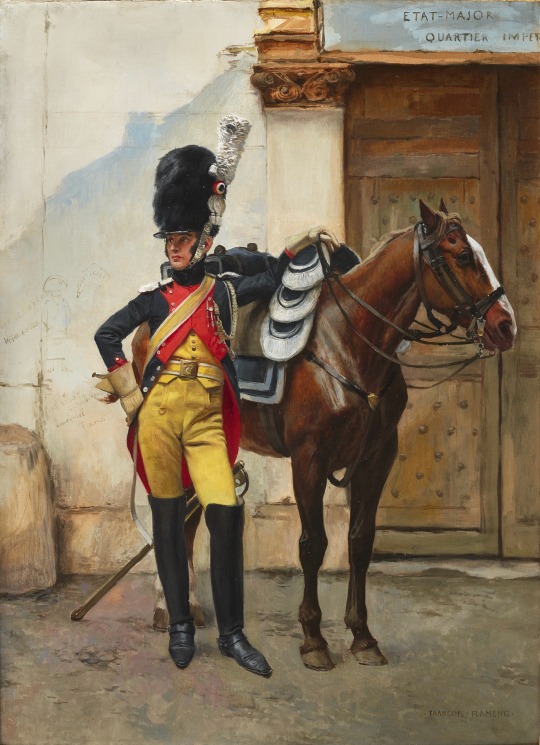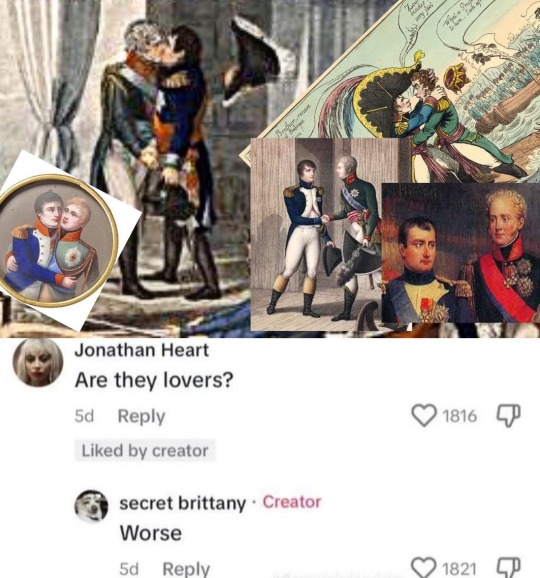#french imperialism
Text

#feminist#social justice#settler colonialism#settler violence#colonialism#colonial violence#french imperialism#british imperialism#belgium#free congo#algeria#history#human rights violations#human rights
825 notes
·
View notes
Text

"MADAGASCAR FORCES SEND FLAG OF TRUCE," Toronto Star. October 14, 1942. Page 3.
---
A tall. French officer carries the flag of truce through the Madagascar port of Majunga after the town's surrender to advancing British troops.
#battle of madagascar#operation ironclad#vichy france#french colonial empire#mahajanga#majunga#french imperialism#vichy in the tropics#armée française#bataille de madagascar#régime de vichy#white flag
1 note
·
View note
Text

I honestly think this map is a bit fucked up no les parece
oh nothing it's just the US military casually (not so casually) admitting "we aren't a force to defend our country, we are a force to enforce our empire, and that empire is the entire planet"
#hey US why does your country has an entire military command for our continent#why does your country has an entire military command for FUCKING SPACE#cosas mias#imperialism#I don't think even the British or the French laid claim to the whole of Earth like the US does#for the US military they own the world in practice and other countries are just pesky rebel provinces or vassals
2K notes
·
View notes
Text
If what’s happening in France right now was happening in the Global South there would be talks about sending troops to bring democracy in France.
The leaders and big figures of the opposition who support Palestinians are getting summoned by the police one by one for refusing to call October 7th a terrorist attack (for the record a lot of them say that it was a war crime because it targeted civilians but not a terror attack so they don’t even support what happened).
All while letting Zionist who actually called for mass murder on live TV get away with it.
But you know what? As strange as it sounds it’s actually a good sign. One of the most violent day for Algerians during the war of liberation (17 October 1961) happened less than a year before the independence just a couple months actually (the independence was on July 5th 1962 but it was signed in March 1962). Because that’s how the colonizers behave and think. The crackdown in France, the new German law forbidding the use of Arabic and Hebrew at pro Palestinian protests, the crackdown in US universities… a wounded dying beast always get more violent. They are scared so they try to silence us harder. They know that it’s a matter of time that the fall of colonialism, imperialism and white supremacy will happen in our lifetime so they try to scare us into stopping the fight.
Don’t get me wrong it will be hard and won’t happen overnight but their reactions are convincing me that we will see a Free Palestine a Free Global South a Free world in our lifetimes.
(P.S: tagging the post with Palestine because my previous post being positive about the outcome seemed to help some people who felt hopeless so I hope this one will help too. That being said we don’t have the right to give up the fight and we shouldn’t give up hope either. None of us is free until all of us are.)
358 notes
·
View notes
Text

Elite Gendarme of the Imperial Guard by François Flameng
#imperial guard#art#françois flameng#gendarmerie#gendarmes#gendarme#headquarters#emperor#empire#french#france#napoleonic#napoleonic wars#history#europe#european#napoléon#napoleon#bonaparte#horse#napoleon bonaparte#napoléon bonaparte#soldier#soldiers
259 notes
·
View notes
Text

Tsar Alexander leaving Napoleon on read. Couldn’t be me.
#lol#tsar alexander i#napoleon#napoleon bonaparte#napoleonic era#napoleonic#Alexander I#first french empire#19th century#french empire#history#french history#russian history#imperial Russia
248 notes
·
View notes
Text







Women in History Month (insp) | Week 3: Consorts and concubines
#historyedit#perioddramaedit#women in history#women in history month challenge#my edits#mine#isabella of parma#imperial noble consort dunsu#eleanor of toledo#ines de castro#mme du barry#eugenie of montijo#empress fu shou#austrian history#chinese history#italian history#french history#portugese history#18th century#15th century#3rd century#14th century#19th century
114 notes
·
View notes
Text





pictures from the annual maintenance of the great mosque of djenné in djenné, mali. the mosque was first built in the 13th century but the current structure dates to 1907.
it (like much of the rest of djenné) is built with sun-baked earth bricks, and its smooth look comes from a coating of plaster applied over it. weather erodes the walls slowly over time, so a new coating of mud and plaster is required to be applied to it every year. the maintenance is also an annual festival which djennéans take part in.
#mali#architecture#worship#muslim#nmenam#my posts#didnt really know how to include the style the mosque is built in most likely being a result of french imperialism on#a post i wanted to make about the festival too eloquently#hopefully that link on ''1907'' is sufficient
76 notes
·
View notes
Text

original post:

We are not free until we are all free. Rebelling against empires and governments -and Revolutions themselves -are not about constantly appeasing one's oppressors in order to create systemic changes. So ANYONE criticizing the people of Congo for this need to shut up.
#feminist#social justice#current events#french imperialism#colonial violence#fuck colonialism#colonialism#current news#african politics#africa#free congo#congo is bleeding#dr congo#congo#systemic injustice#systemic oppression#france
113 notes
·
View notes
Video
Monkey pox and racism
#tiktok#monkey pox#colonization#colonialism#africa#pandemic#us imperialism#imperialism#french imperialism#british imperialism#german imperialism
391 notes
·
View notes
Text
Almost done my novel research, I just need to get to the terror and the (justified) trial and execution of Marie Antoinette and Louis le incompetent <- I’m not saying his number he doesn’t deserve that.




Ah yes, the French revolution the most divisive event in history, my beloved.
Also... Robespierre was a saint compared to feudalism, monarchy and what Louis (and every French monarch before him) was doing to Haiti.
Marie Antoinette’s execution (from a French Revolution pamphlet).
Marie Antoinette on the way to her execution (Francois Fleming 1887).
#meera.musings#wip: liaisons x vampires#french revolution#writing historical fiction#writing horror#maximillian robespierre#marie antoinette#louis xvi#ancien regime#history#know your history#anti colonialism#anti imperialism#anti monarchy#les liaisons dangereuses#dangerous liaisons#18th century#18th century history#historical references
26 notes
·
View notes
Photo

“Little Son of Sultan Is Captivated by the Yo-Yo,” Toronto Star. September 26, 1932. Page 2.
----
Toys charm small sons of sultans as greatly as they do other little folk of high or low degree, in all nations. While in Paris, France, with his father, the sultan of Morocco, little three-year-old Molay el Hassan, was fascinated by the new French toys and here he is, all interest centred on a toy called the yo-yo.
#paris#mulay al-hassan#crown prince#sultan of morocco#yo yo#children's toy#french colonial empire#moroccan history#french imperialism#french protectorate of morocco#interwar period
3 notes
·
View notes
Text
Nothing in the past, moreover, gave any cause to suspect ginseng’s presence so far away. Or even closer by: since antiquity, for well over a millennium, the ginseng consumed in all of East Asia had come from just one area -- the northeast mountainous lands straddling Manchuria and Korea. No one had found it anywhere else. No one was even thinking, now, to look elsewhere. The [...] [French traveler] Joseph-Francois Lafitau didn’t know this. He had been [...] visiting Quebec on mission business in October of 1715 [...]. He began to search for ginseng. [...] [T]hen one day he spotted it [...]. Ginseng did indeed grow in North America. [...]
Prior to the nuclear disaster in the spring of 2011, few outside Japan could have placed Fukushima on a map of the world. In the geography of ginseng, however, it had long been a significant site. The Edo period domain of Aizu, which was located here, had been the first to try to grow the plant on Japanese soil, and over the course of the following centuries, Fukushima, together with Nagano prefecture, has accounted for the overwhelming majority of ginseng production in the country.
Aizu’s pioneering trials in cultivation began in 1716 – by coincidence, exactly the same year that Lafitau found the plant growing wild in the forests of Canada. [...]
---
Since the 1670s the numbers of people [in Japan] clamoring for access to the drug had swelled enormously, and this demand had to be met entirely through imports. The attempt to cultivate ginseng in Aizu -- and soon after, many other domains -- was a response to a fiscal crisis.
Massive sums of silver were flowing out of the country to pay for ginseng and other drugs [...]. Arai Hakuseki, the chief policy maker [...], calculated that no less than 75% of the country’s gold, and 25% of its silver had drained out of Japan [to pay for imports] [...]. Expenditures for ginseng were particularly egregious [...]: in the half-century between 1670s through the mid-1720s that marked the height of ginseng fever in Japan, officially recorded yearly imports of Korean ginseng through Tsushima sometimes reached as much as four to five thousand kin (approx. 2.4–3 metric tons).
What was to be done? [...] The drain of bullion was unrelenting. [...] [T]he shogunate repeatedly debased its currency, minting coins that bore the same denomination, but contained progressively less silver. Whereas the large silver coin first issued in 1601 had been 80% pure, the version issued in 1695 was only 64% silver, and the 1703 mint just 50%. Naturally enough, ginseng dealers in Korea were indifferent to the quandaries of the Japanese rulers, and insisted on payment as before; they refused the debased coins. The Japanese response speaks volumes about the unique claims of the drug among national priorities: in 1710 (and again in 1736) a special silver coin of the original 80% purity was minted exclusively for use in the ginseng trade. [...]
[T]he project of cultivating ginseng and other medicines in Japan became central to the economic and social strategy of the eighth shogun Yoshimune after he assumed power in 1716. [...]
---
China and Korea were naturally eager to retain their monopolies of this precious commodity, and strictly banned all export of live plants and seeds. They jealously guarded as well against theft of mature roots: contemporary Chinese histories, for example, record that the prisons of Shenjing (present day Shenyang) overflowed with ginseng poaching suspects. So many were caught, indeed, that the legal bureaucracy couldn’t keep up.
In 1724, the alarming numbers of suspected poachers who died in prison while awaiting trial led to the abandonment of the regular system of trials by judges dispatched from Beijing, and a shift to more expeditious reviews handled by local officials. [...]
Even in 1721. the secret orders that the shogunate sent the domain of Tsushima called for procuring merely three live plants [...]. Two other forays into Korea 1727 succeeded in presenting the shogun with another four and seven plants respectively. Meanwhile, in 1725 a Manchu merchant in Nagasaki named Yu Meiji [...] managed to smuggle in and present three live plants and a hundred seeds. [...]
Despite its modest volume, this botanical piracy eventually did the trick. By 1738, transplanted plants yielded enough seeds that the shogunate could share them with enterprising domains. [...] Ginseng eventually became so plentiful that in 1790 the government announced the complete liberalization of cultivation and sales: anyone was now free to grow or sell it.
---
By the late eighteenth century, then, the geography of ginseng looked dramatically different from a century earlier.
This precious root, which had long been restricted to a small corner of the northeast Asian continent, had not only been found growing naturally and in abundance in distant North America, but had also been successfully transplanted and was now flourishing in the neighboring island of Japan. […]
---
Colonial Americans, for their part, had developed their own new addiction: an unquenchable thirst for tea. […] This implacable need could have posed a serious problem. [...] [I]ts regular consumption was a costly habit.
Which is why the local discovery of ginseng was a true godsend.
When the Empress of China sailed to Canton in 1784 as the first ship to trade under the flag of the newly independent United States, it was this coveted root that furnished the overwhelming bulk of sales. Though other goods formed part of early Sino-American commerce – Chinese porcelain and silk, for example, and American pelts – the essential core of trade was the exchange of American ginseng for Chinese tea. [...]
---
Yoshimune’s transplantation project had succeeded to the point that Japan actually became a ginseng exporter. As early as 1765, Zhao Xuemin’s Supplement to the compedium of material medica would note the recent popularity of Japanese ginseng in China. Unlike the “French” ginseng from Canada, which cooled the body, Zhao explained, the “Asian” ginseng (dongyang shen) from Japan, like the native [Korean/Chinese] variety, tended to warm. Local habitats still mattered in the reconfigured geography of ginseng. [...]
What is place? What is time? The history of ginseng in the long eighteenth century is the story of an ever-shifting alchemical web. [...] Thanks to the English craving for tea, ginseng, which two centuries earlier had threatened to bankrupt Japan, now figured to become a major source of national wealth [for Japan] .
---
Text by: Shigehisa Kuriyama. “The Geography of Ginseng and the Strange Alchemy of Needs.” In: The Botany of Empire in the Long Eighteenth Century, edited by Yota Batsaki, Sarah Burke Cahalan, and Anatole Tchikine. 2017. [Bold emphasis and some paragraph breaks/contractions added by me.]
#all kinds of fun stuff smuggling piracy biogeography medicinal tea shogunates secret orders#the irony of emerging US empire beginning relationship with china based on export of american ginseng which europeans hadnt known existed#the irony of japan quickly transitioning from almost being bankrupted by ginseng to becoming a ginseng exporter#the importance of local habitats and smallscale biogeography despite the global scale of imperial trade#the french cartographer in 1711 in manchuria who had never been to canada but correctly predicted ginseng might grow there#abolition#ecology#imperial#colonial
106 notes
·
View notes
Text
i honest to God think yemenis have every right to gut any saudi, emirati or usamerican if they so please
#hey btw#while the world was crying and sobbing and shitting themselves over barbaric russian imperialism#and scrambling to sanction russia and stop consuming their gas and oil#what the fuck were the french and americans doing in shabwa i wonder#hopefully not exploiting and exporting the natural resources of one of the poorest most dire countries in the world rn#fuck off all the way to hell death to every single one of you. fuck
29 notes
·
View notes
Text

Elite Gendarme of the Imperial Guard under the First Empire by François Flameng
#françois flameng#art#napoleonic#gendarme#imperial guard#headquarters#emperor#napoleonic wars#napoléon#napoleon#history#french empire#france#french#paris#europe#european#horse#cavalry#first french empire#bonaparte#napoleon bonaparte#napoléon bonaparte#horses#empire#gendarmerie#gendarmes
59 notes
·
View notes
